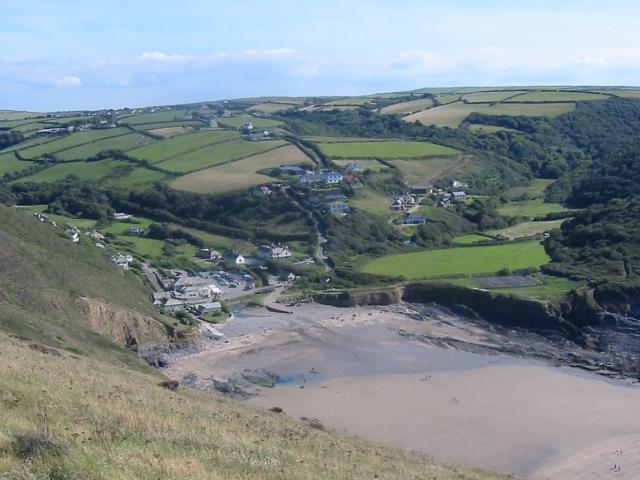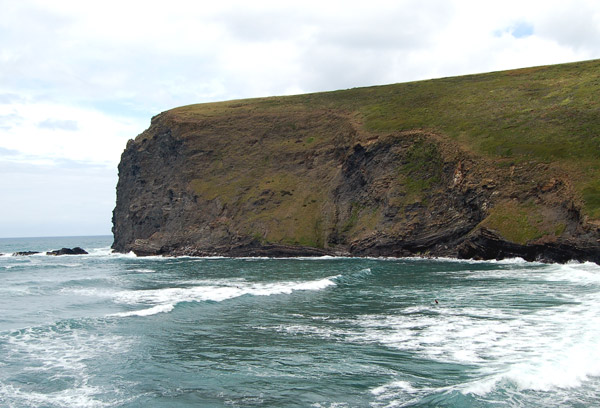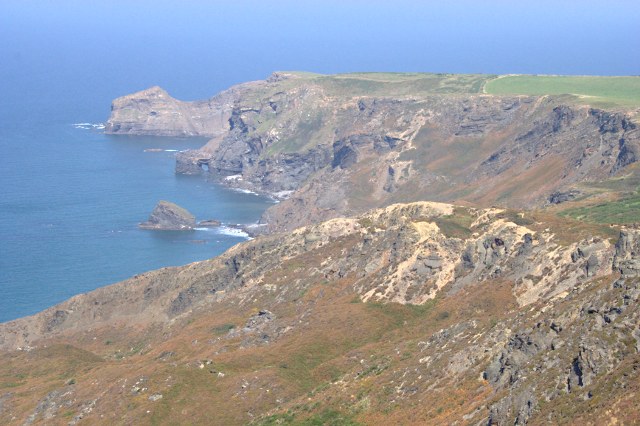Crackington Haven on:
[Wikipedia]
[Google]
[Amazon]



 Crackington Haven ( kw, Porthkragen, meaning "sandstone cove") is a coastal village in
Crackington Haven ( kw, Porthkragen, meaning "sandstone cove") is a coastal village in



 Crackington Haven ( kw, Porthkragen, meaning "sandstone cove") is a coastal village in
Crackington Haven ( kw, Porthkragen, meaning "sandstone cove") is a coastal village in Cornwall
Cornwall (; kw, Kernow ) is a Historic counties of England, historic county and Ceremonial counties of England, ceremonial county in South West England. It is recognised as one of the Celtic nations, and is the homeland of the Cornish people ...
, England, United Kingdom. It is in the civil parish
In England, a civil parish is a type of administrative parish used for local government. It is a territorial designation which is the lowest tier of local government below districts and counties, or their combined form, the unitary authorit ...
of St Gennys
St Gennys ( kw, S. Gwynnas) is a coastal civil parish and small settlement in north Cornwall, England, United Kingdom.
The hamlet of St Gennys is about seven miles (11.3 km) southwest of Bude.Ordnance Survey: Landranger map sheet 190 '' ...
at at the head of a cove on the Atlantic coast. The village is seven miles (11 km) south-southwest of Bude and four miles (7 km) north-northeast of Boscastle.Ordnance Survey: Landranger map sheet 190 ''Bude & Clovelly''
Middle Crackington and Higher Crackington are associated settlements. They are situated on the hill southeast of Crackington Haven, half-a-mile and one mile distant respectively.
Geography
Crackington Haven is popular with tourists, walkers and geology students. The surrounding cliffs are well known for their visible folded sedimentary rock formations. The village gives its name to the Crackington formation, a sequence ofCarboniferous
The Carboniferous ( ) is a geologic period and system of the Paleozoic that spans 60 million years from the end of the Devonian Period million years ago ( Mya), to the beginning of the Permian Period, million years ago. The name ''Carboniferou ...
sandstone
Sandstone is a clastic sedimentary rock composed mainly of sand-sized (0.0625 to 2 mm) silicate grains. Sandstones comprise about 20–25% of all sedimentary rocks.
Most sandstone is composed of quartz or feldspar (both silicat ...
s and grey shale
Shale is a fine-grained, clastic sedimentary rock formed from mud that is a mix of flakes of clay minerals (hydrous aluminium phyllosilicates, e.g. kaolin, Al2 Si2 O5( OH)4) and tiny fragments (silt-sized particles) of other minerals, especiall ...
s.
The village has two café-style tea rooms, and a pub called the Coombe Barton Inn in a building which was originally the house of the manager of a local slate quarry.
Crackington Haven has a stony foreshore but a sandy beach is revealed at low water. The local parish council has put up signs asking that people do not remove stones, and saying that people who do will be prosecuted under the 1949 Coastal Protection Act. There are toilet facilities near the beach and lifeguard cover in the summer.
Immediately north of the beach is Pencarrow Point and a few hundred yards south is Cambeak headland (between Tremoutha Haven and Cam Strand); the clifftop here is 328 ft. Cambeak is derived from Old Cornish and means "crooked point". One mile south of Crackington Haven, High Cliff rises to . It is Cornwall's highest cliff, (Great Hangman in Devon has a cliff face of .
Crackington Haven lies within the Cornwall Area of Outstanding Natural Beauty
The Cornwall Area of Outstanding Natural Beauty covers in Cornwall, England, UK; that is, about 27% of the total area of the county. It comprises 12 separate areas, designated under the National Parks and Access to the Countryside Act 1949 for ...
(AONB). Almost a third of Cornwall has AONB designation, with the same status and protection as a National Park.
History
The manor of Crackington was recorded in the Domesday Book (1086) when it was one of several manors held by Berner fromRobert, Count of Mortain
Robert, Count of Mortain, 2nd Earl of Cornwall (–) was a Norman nobleman and the half-brother (on their mother's side) of King William the Conqueror. He was one of the very few proven companions of William the Conqueror at the Battle of Hast ...
. There was half a hide of land and land for 3 ploughs. There were 1 plough, 2 serfs, 6 smallholders, 4 acres of underwood, 20 acres of pasture, 4 cattle, 3 pigs and 25 sheep. The value of the manor was 10 shillings though it had formerly been worth £1 sterling.Thorn, C. et al., ed. (1979) ''Cornwall''. Chichester: Phillimore; entry 5,8,6
Until the nineteenth century, Crackington Haven was a small port similar to many others on the north coast of Cornwall. Limestone and coal were imported and slate and other local produce were exported. After the railways reached the district in 1893 the village could be reached more easily (from the North Cornwall Railway station at Otterham
Otterham ( kw, Prasotri) is a village and a civil parish in north Cornwall, England, United Kingdom. The village is situated approximately south of Bude and north of Camelford.Ordnance Survey: Landranger map sheet 190 ''Bude & Clovelly''
Ot ...
) so holidaymaking became more common.
Crackington Haven was badly affected by the 2004 flood that damaged several other villages, notably Boscastle. The road bridge across the stream, several homes and the pub were damaged by floodwater.
References
{{authority control Beaches of Cornwall Villages in Cornwall Populated coastal places in Cornwall